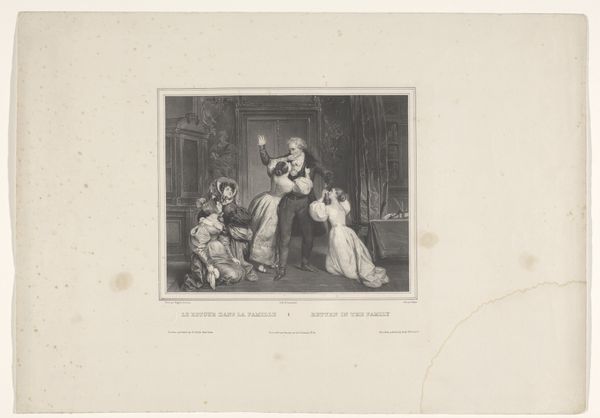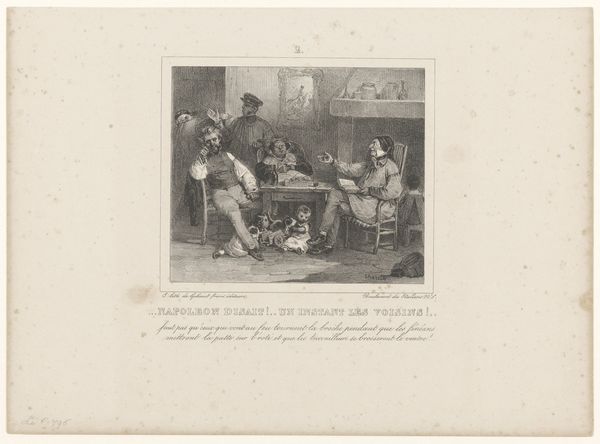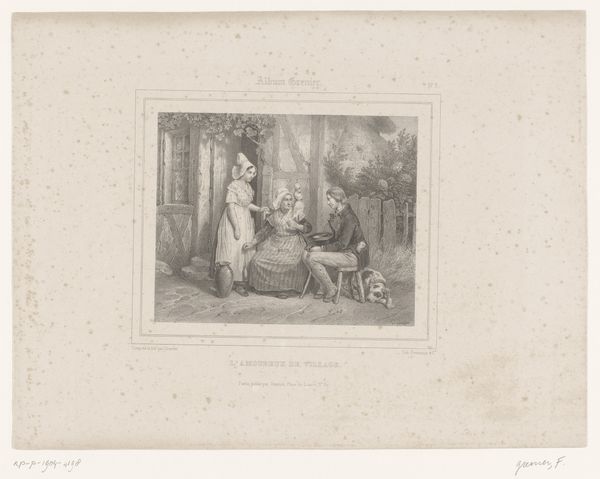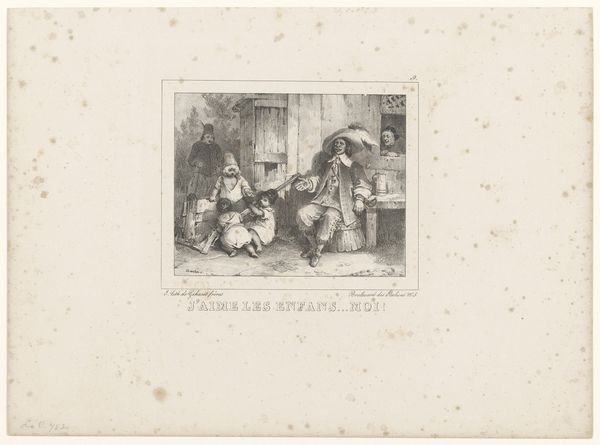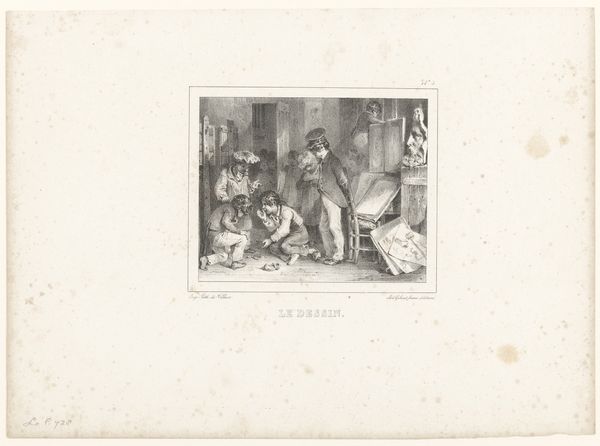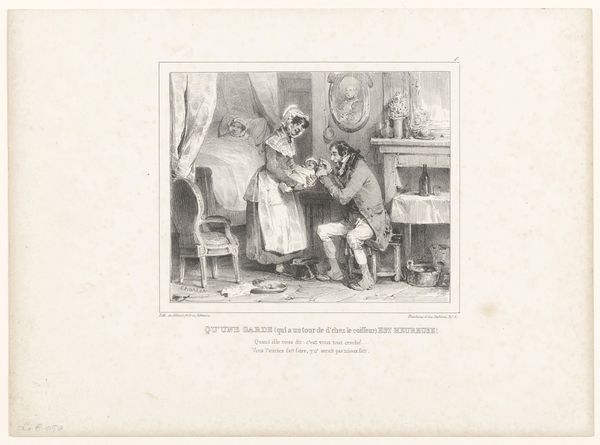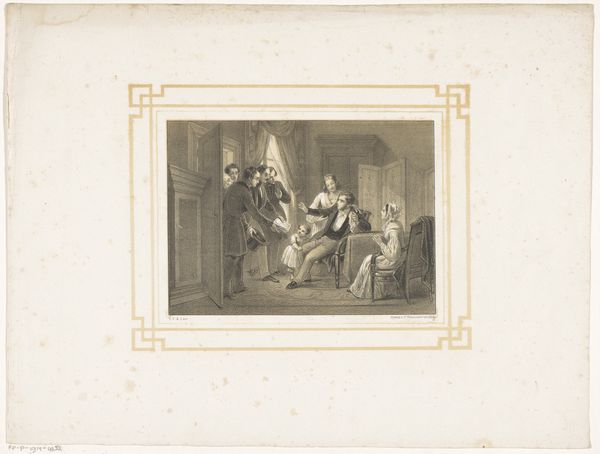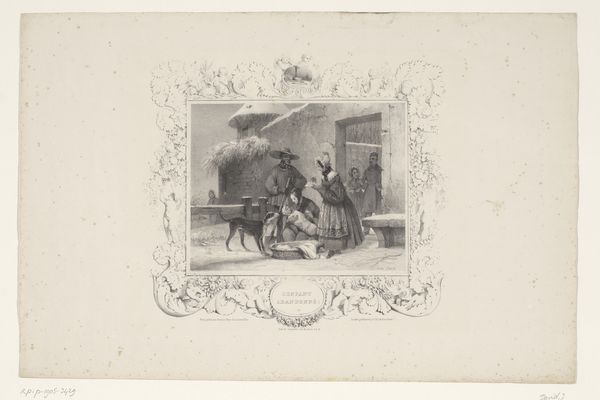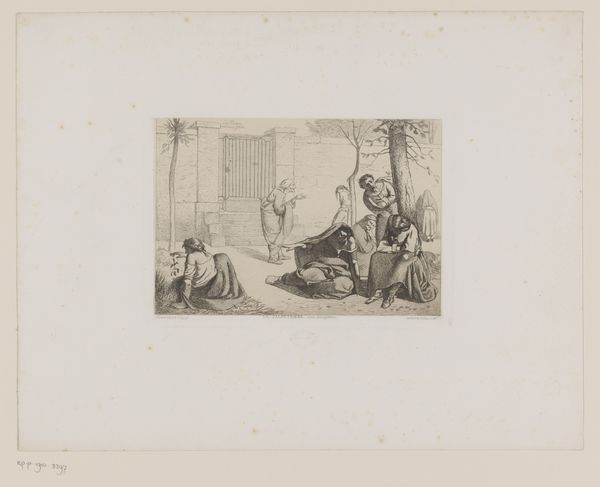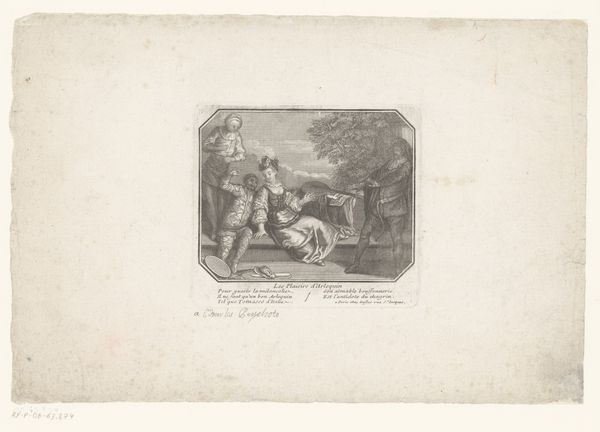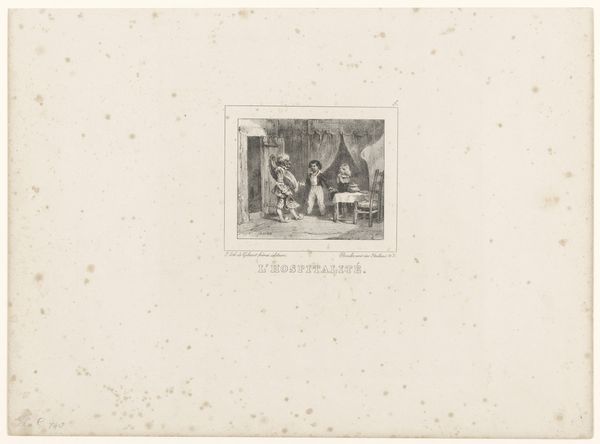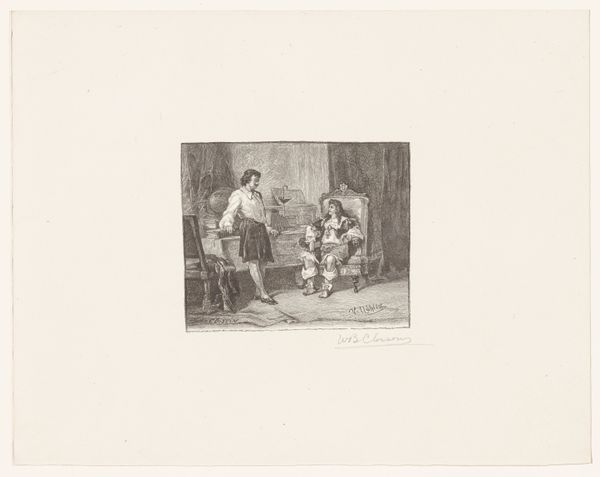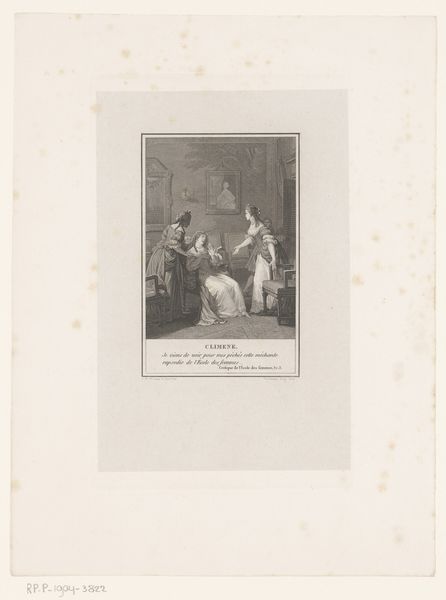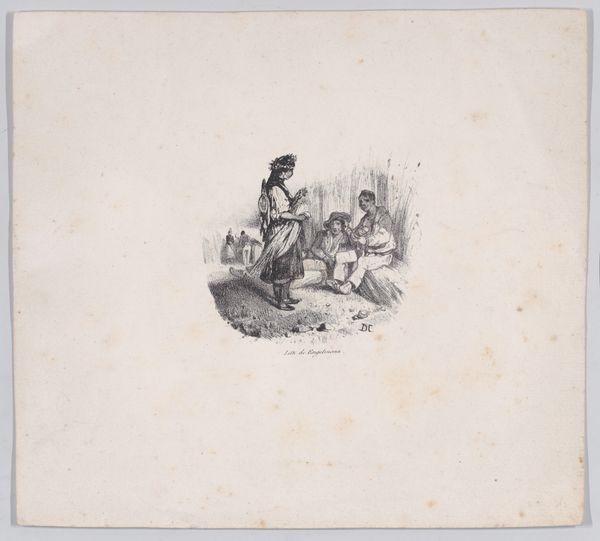
drawing, print, etching, paper
#
drawing
#
narrative-art
# print
#
etching
#
figuration
#
paper
#
romanticism
#
line
#
genre-painting
#
history-painting
#
realism
Dimensions: height 249 mm, width 338 mm
Copyright: Rijks Museum: Open Domain
Curator: Here we have Nicolas Toussaint Charlet’s "Oude man geeft een wijze les aan een jonge soldaat," or, “Old Man Giving Wise Advice to a Young Soldier," an etching dating from 1830. The interplay of light and shadow certainly gives it a sentimental aura. Editor: Indeed, that striking contrast immediately catches the eye, doesn’t it? There’s a certain austerity in the etching’s grayscale that adds to the somber, yet intimate mood. The balance of the two figures sitting around the table is nearly symmetrical too. Curator: That contrast contributes to the clear visual hierarchy that organizes the figures and sets the atmosphere. The image encapsulates the Romantic era's emphasis on emotion. Charlet utilizes line and form to craft a space for narrative; the central positioning of the text below reinforces that intention. Editor: Absolutely. This print offers us a glimpse into the 19th century public's perception of military life and wisdom through this meeting between youth and age. It speaks to France's shifting political landscape post-Revolution. The image probably circulated quite broadly; didactic art with clear messages suited the sociopolitical climate. Curator: The crispness of the lines lends itself well to mass production via etching. Focus on the fine detail: The texture in the old man’s beard contrasts markedly with the soldier's uniform, creating compelling points of interest within the restricted tonal range. This tension emphasizes the opposing roles and experiences they hold. Editor: That is well put! One considers the effect of that contrast circulating amongst a public well-aware of generational differences amid rapid social transformation. Beyond aesthetic appreciation, it fosters social understanding and potentially shaped public perception of veterans and youth navigating tumultuous times. Curator: Observing its masterful composition, balanced by linear harmony, grants a keen understanding into the thematic implications Charlet sought to address through structured visual dialogue. Editor: Studying its broader circulation within society gives rise to considerations about audience and national self-perception that add new layers to an engaging study of art’s purpose during transformative epochs.
Comments
No comments
Be the first to comment and join the conversation on the ultimate creative platform.
